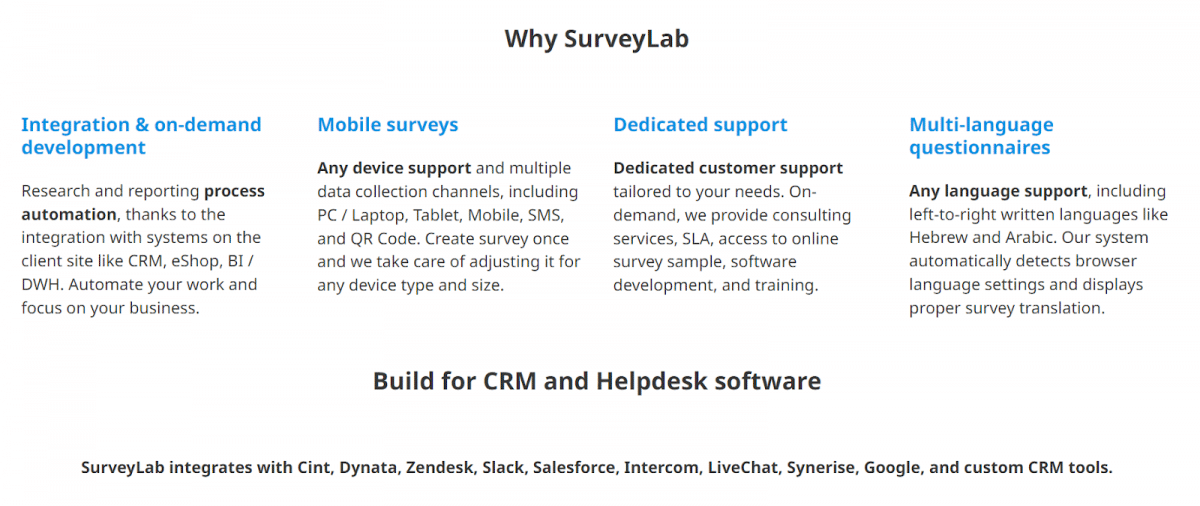Questions might be simple tools for gathering information, but when phrased strategically, they can influence responses and reveal deeper insights.
Known as “loaded questions,” they are crafted to prompt specific answers, often reflecting biases or assumptions.
Check out how you can use them to your advantage.
What is a loaded question?
A loaded question presupposes a truth that has not been confirmed. It compels the respondent to accept a certain premise as true. Opinions and responses can suffer as a result.

The nuances of question formulation in surveys
A successful survey calls for a thoughtful approach to question formulation, particularly when seeking to avoid biased questions and capture truly representative data.
Wondering how to ensure your questions invite honest, unbiased responses? We will show you how to do it without leading respondents down a predetermined path.
A handful of tips:
Avoid biased language
The words you choose matter and can influence the particular response you get. To avoid biased language, use neutral terms that don’t imply judgment or lead to a biased way of thinking.
Example of biased: Do you agree that the new manager is failing?
Example of neutral: How would you rate the new manager’s performance?
Describe options clearly
When you describe options in a questionnaire, clarity is your goal. Ensure all potential choices are covered and that they completely represent the range of responses.
Then, respondents are not forced into a particular selection that doesn’t accurately reflect their views or experiences.
Example of unclear answers: How often do you use social media?
Options :
- Regularly
- Sometimes
- Rarely
Issues with unclear options :
The terms “regularly,” “sometimes,” and “rarely” are subjective and can mean different things to different people.
There is no option for those who do not use social media at all.
Example of clear answers:
Question: How often do you use social media?
Options:
- Multiple times a day
- Once a day
- A few times a week
- Once a week
- Less than once a week
- I do not use social media
Each option is clearly defined, and the frequency is clear.
Includes an option for respondents who do not use social media, covering all potential responses.
Be careful with trick questions
Trick questions often appear in surveys to check consistency or knowledge, but they can turn respondents off or lead to inaccurate results.
It’s better to form straightforward questions that respect the respondent’s time and intelligence.
Explore unexpected ways
To uncover insights in the most unexpected ways, frame some questions to require users to think beyond the obvious.
For instance, ask them to reflect on a specific way a product or policy affects them, which they might not have considered at first glance.
Check out an example to illustrate how to frame a question that encourages respondents to think beyond the obvious and uncover deeper insights:
Standard question: Are you satisfied with the current public transportation system?
Options:
- Yes
- No
It’s a very straightforward question but doesn’t prompt the respondent to think deeply or share insights beyond a simple binary response.
Here’s an example of a reflective question: In what unexpected ways has the public transportation system impacted your daily routine or lifestyle choices?
Options:
- It has influenced my choice of residence.
- It has affected my daily productivity or leisure time.
- It has impacted my physical health or activity levels.
- It has altered my social interactions or family time.
- None of the above; please specify.
Add an additional field for respondents to answer in their own words to the options.
SurveyLab is a surveying tool for creating polls, quizzes, surveys, and more. And the tool may help you build your questionnaire as you want.
With a rich template gallery, you can create various questions with many answer types. Also, sharing your survey is super easy and takes only a few clicks.

Sign up and try SurveyLab today.
Be ethical
Always be aware that how you ask a question can as much reflect your own biases as influence the answers. Ethical questioning avoids assumptions and allows the person to express their true thoughts without feeling they must answer in a certain type of way.
These are the most important tips for you to craft questions that not only achieve more accurate results but also respect the perspectives and experiences of your respondents.
📚 Read also: What is Non-Response Bias and Why It Matters.
When to use loaded questions?
You know how, and it’s time to know when!

Personal or professional bias
Such questions can highlight biases in everyday conversations and professional discussions. They may give a clearer view of the attitudes that may otherwise remain unspoken.
For example, imagine you are in a meeting, and someone seems to favor a specific vendor. You might ask, “Why do you think this vendor is the best, given their higher prices and mixed reviews?” The question assumes there are issues with the vendor, pushing the person to explain their preference. Bias of the respondent is more likely to be revealed.
Then, listen carefully to how they justify their position. Do they provide solid reasons, or do they seem defensive? It can tell you a lot about their true feelings and any underlying bias.
Gauging reaction to controversial candidates
In political surveys or discussions involving controversial candidates, loaded questions can be a strategic tool to assess public sentiment and bias.
A question like, “Considering his track record of failed policies, what is your opinion of Candidate X?” assumes a negative view that can influence the person’s voting choice.
That may illustrate the intensity of feeling against or for a candidate and give insights into voter behavior and potential election outcomes.
Market research and consumer feedback
Loaded questions can be particularly effective in market research to elicit more positive answers or confirm preconceived ideas.
When survey creators direct respondents with questions like, “What do you love about our new product?” the survey creator encourages a focus on the positive aspects, which can be useful for marketing strategies and advertisements.
Be careful, though. Such questions might lead to inaccurate results if not balanced with neutral questions to gauge honest feedback.
Psychological studies and behavioral tests
In psychological evaluations or behavioral studies, loaded and leading questions can be used to explore the respondent’s deeper psychological and emotional states.
Questions crafted to elicit specific answers can uncover hidden reactions and feelings that straightforward queries might not.
The question “Did you feel relieved when the argument stopped?” implies the argument was unpleasant and probes for emotional relief. It may help to better understand how the person copes with his or her emotions.
Legal interrogations and depositions
In legal settings, leading questions are frequently used to confirm specific details or elicit admissions, which might not be as easily captured through open-ended questions.
An attorney might ask, “Isn’t it true that you were at the scene?” This kind of leading question forces the respondent to address the assumption directly, which can be crucial in building or dismantling a case.
While useful in law, should be employed judiciously to avoid misleading the court or creating bias.
📚 Read also: Understanding Acquiescence Bias and How to Avoid It in Survey.

What to choose – leading or loaded questions?
When faced with the decision of whether to use leading questions or loaded questions in your surveys, questionnaires, or interviews (e.g., for principal interview questions), you need to understand the differences between the two and how they can greatly enhance the quality of your data.
Leading questions guide the respondent towards a specific answer. They can be useful when you need to confirm details or when the correct answer is known but you require the respondent to state it. For instance, in legal contexts or when verifying information.
Example: You saw the red car stop at the lights, didn’t you?
Loaded questions contain a preconceived assumption and often force the respondent to answer in a particular way. They reveal the respondent’s personal biases or trigger a specific response.
Loaded questions are powerful in psychological profiling and market research, where understanding emotional or subconscious leanings is the base.
Example: “How did you manage to stay calm despite the unfair workload?”
Key considerations when choosing between leading and loaded questions
- Objective – determine what you need from the data. Use leading questions for clarity and precision, and loaded questions for deeper insights into thoughts and feelings.
- Context – in professional lives, leading questions are more acceptable, whereas loaded questions can affect results and are seen as a logical fallacy in data gathering.
- Ethics – always consider the ethical implications. Loaded questions can manipulate and mislead, potentially causing respondents to feel uncomfortable or misrepresented.
Ultimately, the choice between leading and loaded questions depends on the intended purpose of your inquiry and the desired depth of information. While both can yield valuable data, they should be used judiciously to avoid introducing bias and to ensure the collection of more accurate results.
Conclusion
Loaded questions can uncover biases and provide deeper insight into many different situations. Knowing when to use them helps you get more honest and useful answers. So use them wisely – mix them with neutral questions to keep your data accurate and fair.
Also, mastering question formulation can make your surveys and conversations way more successful. Always ask questions that respect the respondent’s views and experiences.
Want to create surveys that dig deep and provide clear results? Check out SurveyLab. With its rich template gallery and easy sharing options, you can make surveys that work. Try it now and see the difference!
FAQ on loaded questions
Any doubts? We will help you to clear them with our FAQ section.
What is a loaded question?
A loaded question makes you accept something as true before you answer. It often shows a bias or assumption and can expose hidden feelings or thoughts.
How do loaded and leading questions differ?
Loaded questions assume something and push you to answer in a particular way. Leading questions guide you to a specific answer. Loaded questions show biases, while leading questions check details or confirm facts.
Both types can be useful, but in different ways.
When should I use a leading question?
Use a leading question when you need a clear, specific answer. They work well in legal settings or when you want to confirm details. They help get the correct answer quickly. But be careful not to influence the respondent too much.
Why are clear options important in surveys?
Clear options help people understand what you want them to answer. Vague choices can mean many different things to many people, and clear options give better, more accurate data.
What are the benefits of using loaded questions in market research?
Loaded questions can highlight customer feelings and thoughts, help focus on specific aspects you want to explore and identify customer preferences. However, they should be balanced with neutral questions.
